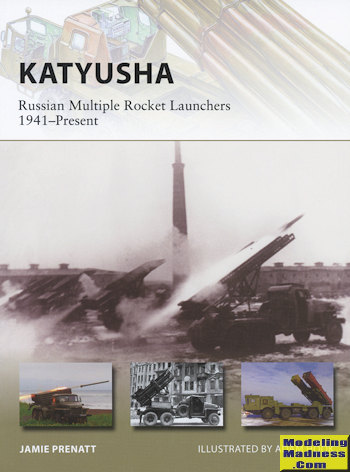 Multiple
rocket launchers are not new items. As far back as the 13th century, the Chinese
were using batteries of rockets to attack adversaries. In fact, these may have
even pre-dated that time, but this is the earliest evidence we have. As with all
things Chinese at the time, the idea worked its way through Asia and the Arab
world into Europe. Rockets were used in the 1300s and were relatively
commonplace by the time the 1700s arrived. In the 1700s the Kingdome of Mysore
had a 5,000 man rocket artillery unit. By the 19th century, 16 European nations
had rocket artillery. It was Russia which really took to using these devices and
in various battles throughout the century, made rather widespread use of these
weapons.
Multiple
rocket launchers are not new items. As far back as the 13th century, the Chinese
were using batteries of rockets to attack adversaries. In fact, these may have
even pre-dated that time, but this is the earliest evidence we have. As with all
things Chinese at the time, the idea worked its way through Asia and the Arab
world into Europe. Rockets were used in the 1300s and were relatively
commonplace by the time the 1700s arrived. In the 1700s the Kingdome of Mysore
had a 5,000 man rocket artillery unit. By the 19th century, 16 European nations
had rocket artillery. It was Russia which really took to using these devices and
in various battles throughout the century, made rather widespread use of these
weapons.
However, it was the introduction of mechanization in the 20th century
which really got Russian and Soviet interest into high gear. In the late 1930s,
the Soviets started experimenting with truck mounted batteries. Some of the
difficulties were in providing a stable platform and another was in getting more
accuracy out of the rockets in question. Eventually, much testing resulted in
what we now know as the Katyusha system of truck mounted rocket systems firing
over the cab of the truck with jacks used to stabilize the truck during firing.
The Soviets developed a number of different systems based on the rockets
that were used. These could be attached to any available truck, but the one that
was preferred was the Lend Lease Studebaker. Other vehicles such as those that
were tracked which could move over terrain the trucks could not were used as
well, though not in large numbers. By the end of WWII, the Soviet Katyusha
regiments were large in number and able to fire a devastating barrage at some
ranges greater than their field guns.
The end of WWII did not stop development of these sorts of systems and
while other nations have done some similar development, none have put the effort
into it that the Soviets and Russians have. The systems have become more
technically advanced with external guidance systems allowing the sort of
accuracy that could have only be dreamt of earlier.
In this book, the author covers the background of military rocket use
and then concentrates on its use by the Russians/Soviets. A somewhat bewildering
number of systems, many distinct from each other were designed and put into
production. Even today, there MRLS (Multiple Rocket Launch Sytems) in service
with many nations, but none with the diversity of the Russians. Each system and
its use in warfare is covered with lots of great photos and the superb art work
or Adam Hook. It makes for an excellent look into this line of weapons and
an interesting read to anyone with an interest in military weapons.
June 2016
Copyright ModelingMadness.com
For more on the complete line of Osprey books, visit
http://www.ospreypublishing.com
If you would like your product reviewed fairly and
fairly quickly, please
contact
the editor or see other details in the
Note to
Contributors.
 Multiple
rocket launchers are not new items. As far back as the 13th century, the Chinese
were using batteries of rockets to attack adversaries. In fact, these may have
even pre-dated that time, but this is the earliest evidence we have. As with all
things Chinese at the time, the idea worked its way through Asia and the Arab
world into Europe. Rockets were used in the 1300s and were relatively
commonplace by the time the 1700s arrived. In the 1700s the Kingdome of Mysore
had a 5,000 man rocket artillery unit. By the 19th century, 16 European nations
had rocket artillery. It was Russia which really took to using these devices and
in various battles throughout the century, made rather widespread use of these
weapons.
Multiple
rocket launchers are not new items. As far back as the 13th century, the Chinese
were using batteries of rockets to attack adversaries. In fact, these may have
even pre-dated that time, but this is the earliest evidence we have. As with all
things Chinese at the time, the idea worked its way through Asia and the Arab
world into Europe. Rockets were used in the 1300s and were relatively
commonplace by the time the 1700s arrived. In the 1700s the Kingdome of Mysore
had a 5,000 man rocket artillery unit. By the 19th century, 16 European nations
had rocket artillery. It was Russia which really took to using these devices and
in various battles throughout the century, made rather widespread use of these
weapons.